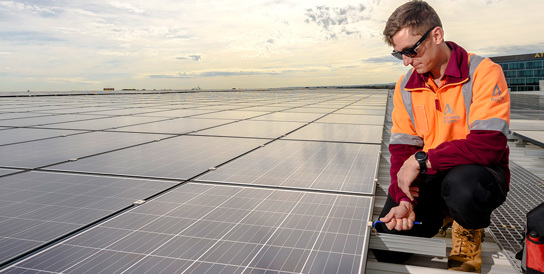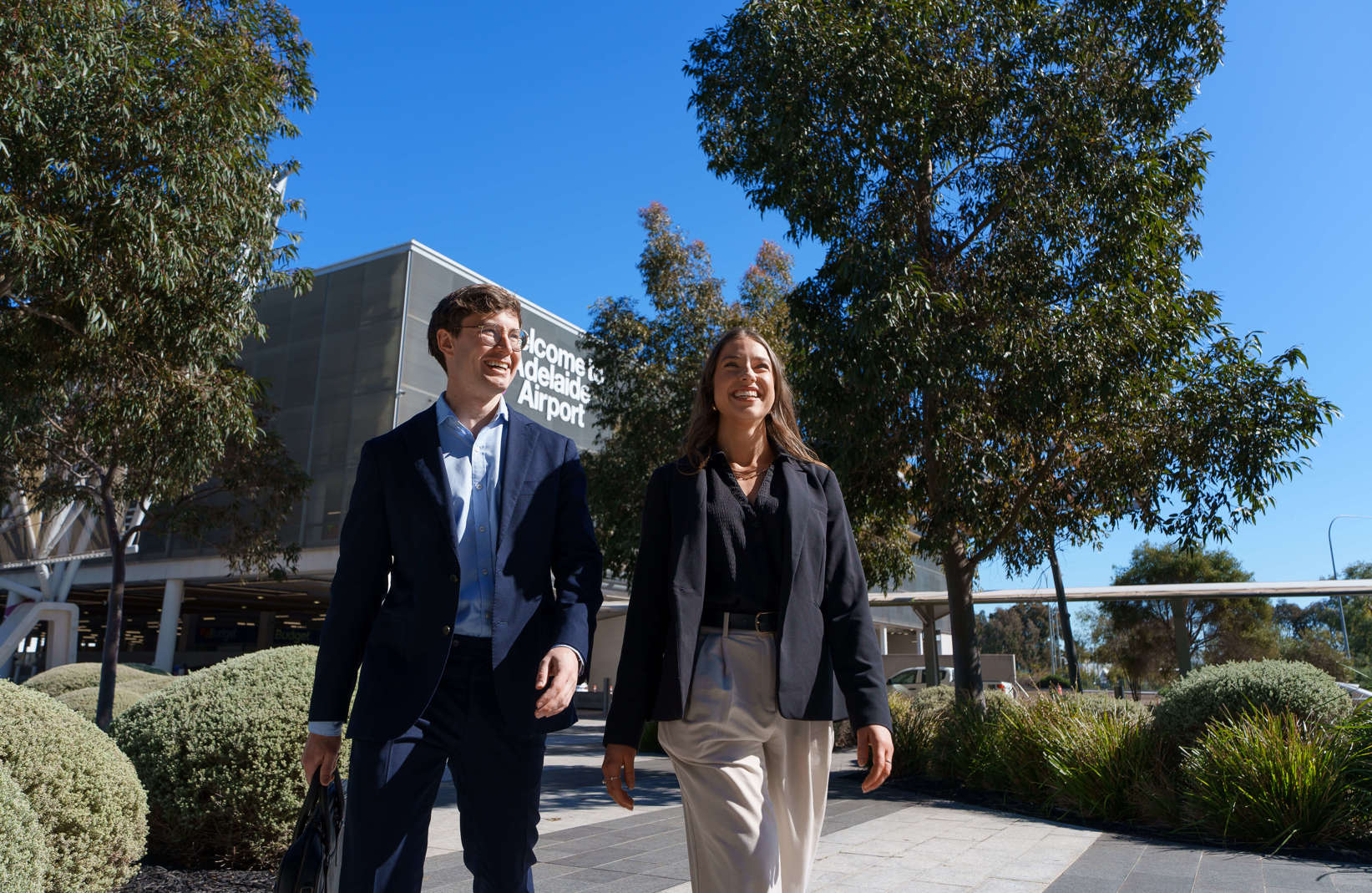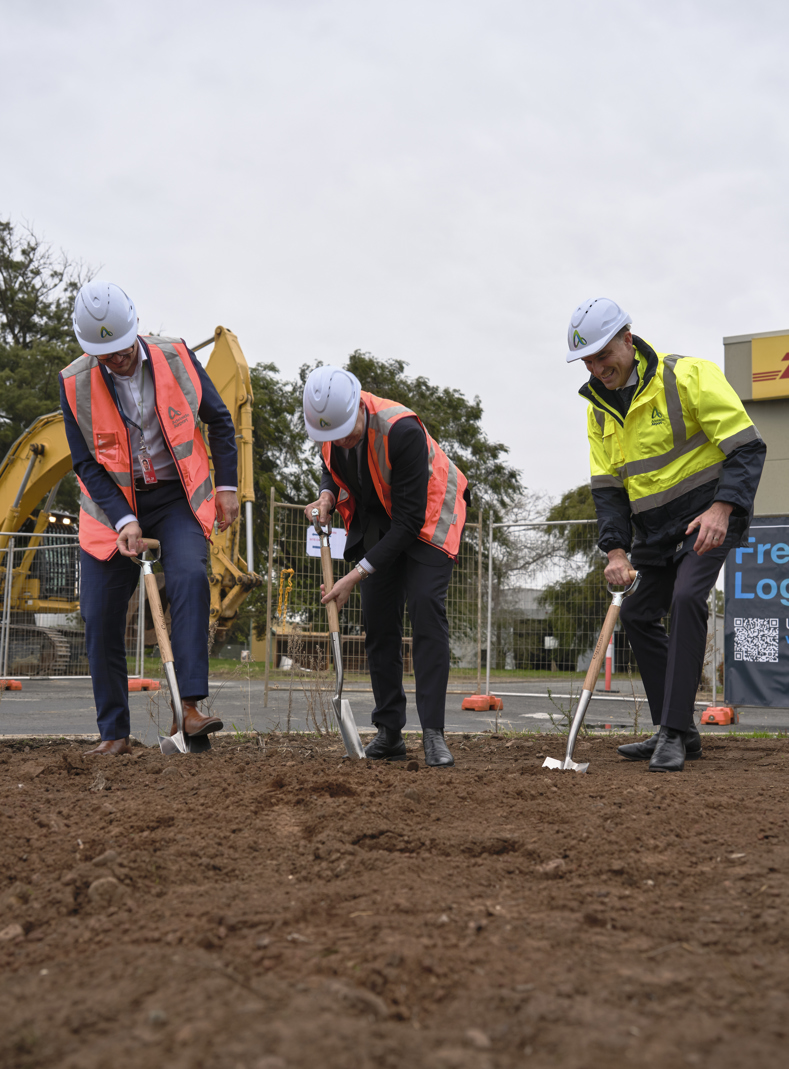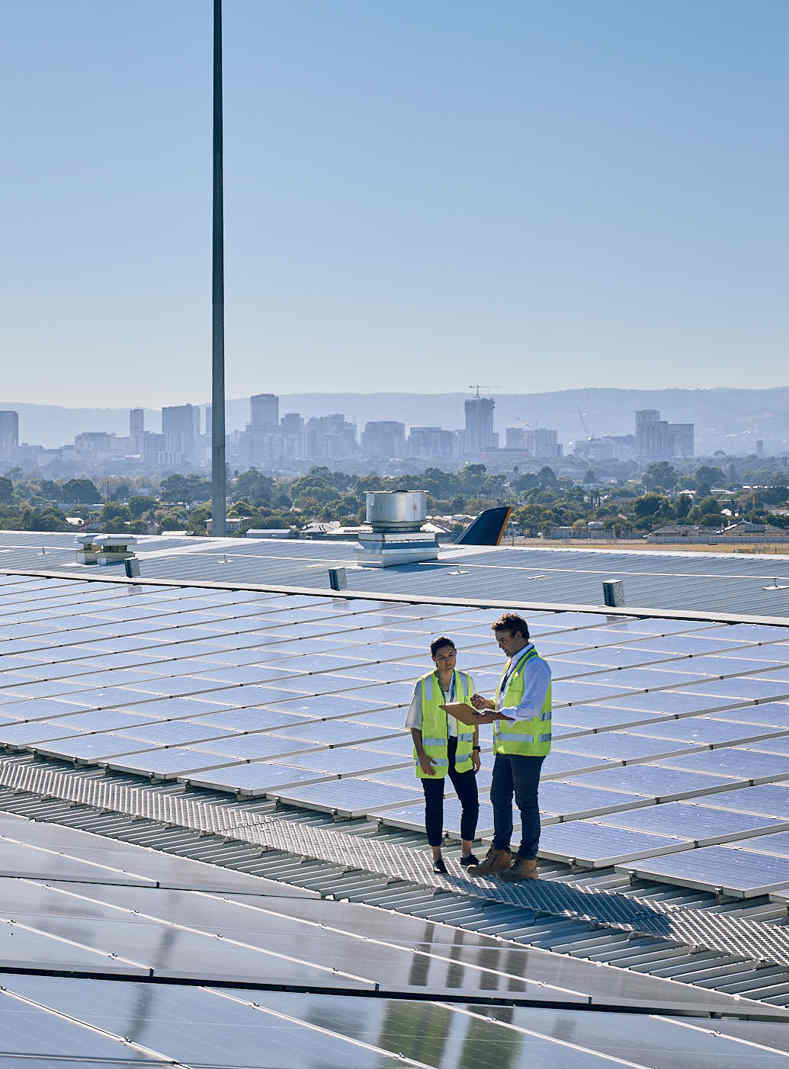Sustainability

Our Commitment to Sustainability at Adelaide Airport
Adelaide Airport Limited strives for sustainability excellence as a global airports sector leader in sustainability and our people are committed to embedding the intent of this policy into day-to-day business. This means allocating capital, embedding sustainability into our processes and investing time to partner with the right people. Our robust governance processes ensure that we will routinely review and report on our sustainability progress and outcomes.
Our Sustainability Objectives

Carbon

Energy

Water

Waste

Landscapes
Sustainability Policy
Adelaide Airport Limited is committed to leading the aviation sector in sustainability through responsible growth, innovation, and strong governance. This policy outlines AAL’s strategic approach to embedding sustainability across its operations, with a focus on decarbonisation, climate resilience, nature-positive initiatives, water stewardship, circular supply chains, and waste reduction. By aligning with global best practices and engaging stakeholders, AAL aims to deliver long-term value for the community, environment, and economy.
Adelaide Airport’s Path to Decarbonisation
Adelaide Airport is committed to leading the aviation industry in climate action by prioritising the elimination of fossil fuel use across its operations. This includes transitioning to onsite renewable energy sources, adopting electric-powered equipment, purchasing certified green power, and offsetting any residual emissions that cannot be avoided.
To ensure transparency and accountability, the airport measures and discloses its annual greenhouse gas emissions. Progress toward decarbonisation targets is tracked and reported in alignment with recognised standards and industry best practices, reinforcing Adelaide Airport’s dedication to a low-carbon future.
Adelaide Airport is committed to the efficient use of this precious natural resource.
Adelaide Airport is committed to reducing its reliance on potable water sources through the expansion of non-potable water alternatives.
Adelaide Airport lies within the driest state in the driest continent, South Australia and recognises the value of water and importance of appropriate water resource management at Airport to ensure the continued health of the environment as well as reducing the Airport’s reliance on state water resource services (potable mains water).
Adelaide Airport has continuously reduced water consumption and potable mains water reliance for over 15 years. Recycled water from the Glenelg Wastewater Treatment Plant (GWTP) is used for all irrigation as well as toilet flushing in Terminal 1. AAL is further reducing reliance on potable mains water through construction in 2012 of a stormwater harvesting facility within the multi-level car park that directly feeds the Terminal 1 cooling system.
In 2014, AAL was a key stakeholder in facilitating the construction by SA Water of the Adelaide Airport Stormwater Harvesting Scheme. Water collected from the Brownhill-Keswick Creek catchment will be stored in the local aquifer and used as an alternative supply of treated non-potable water for future airport developments.
AAL has also committed to reducing water consumption and improving water use efficiency through:
- incorporation of drought-tolerant species into new and upgraded landscaping facilities;
- development and implementation of an irrigation management plan; and
- ongoing education of AAL personnel, tenants and contractors on water conservation
Working together to decrease our impact on the environment.
Waste management at Adelaide Airport is driven by Zero Waste SA’s hierarchy of waste management: reduction, reuse, recycle, recovery, treatment and disposal and is underpinned by AAL’s Waste Management Strategy.
Waste streams generated on-airport include organics (e.g. food), paper and cardboard (e.g. newspapers), aluminium cans, plastics, electronic, construction, hazardous (e.g. waste oil, fluorescent tubes) and green waste.
Recycling rates increased significantly with the implementation in 2010 of public space recycling in Terminal 1 for general, comingled recyclable and paper/cardboard waste streams. This scheme complements the existing recycling system available to retail and airline tenants.
Further, after the successful implementation of a food organics recycling trial involving two retailers within Terminal 1 the scheme has been expanded to all food and beverage tenants. Food scraps and coffee grinds are taken by a waste contractor to a composting facility where it is turned into a quality compost product that is sold back to businesses and the community. Similarly, AAL mulches and composts garden waste on airport for reuse.
Mature recycling programs exist in AAL offices and many tenancies for paper and cardboard, printer cartridges, waste oil, batteries, drink containers, construction waste and food waste. Significant proportion of demolition waste from AAL construction projects is recycled into a product that can be used in road construction and maintenance.
AAL works collaboratively with tenants to reduce waste and seeks to positively influence their environmental performance.
Taking action to secure a cleaner future.
Adelaide Airport acknowledges that the world is heading towards a carbon constrained future which demands that businesses address the various risks associated with climate change and energy. Adelaide Airport’s commitment to managing and minimising carbon emissions generated by operation activities and reducing energy consumption is underpinned by its Low Carbon Statement and Carbon Management Plan.
A mature greenhouse gas accounting system forms the foundation of AAL’s carbon management program and is essential in measuring progress against reduction targets. The system was verified by Airports Council International (ACI) in 2013 resulting in Adelaide Airport being the first in Australasia to be awarded certification to Level 1 of the ACI Airport Carbon Accreditation program for mapping its carbon footprint. It achieved another significant milestone in 2015 becoming the first to be awarded certification to Level 3 by demonstrating measurable reductions in its carbon footprint as well as seeking to influence and guide its stakeholders in doing the same.
Adelaide Airport is currently below the corporate greenhouse reporting threshold under the National Greenhouse and Energy Report Act 2007. However, AAL is conforming to, and reporting against, ACI’s rigorous accounting standards.
AAL’s carbon footprint is being reduced through various clean energy measures.
Electricity is mostly consumed by AAL terminal buildings, car parks, offices, street lighting and airfield lighting. AAL is achieving improved energy efficiency through initiatives such as LED lighting, sensor-operated lighting, smart heating and cooling operation and upgrades, and staff awareness campaigns to change energy habits.
Collaboration is occurring with tenants to employ green leases for ‘green’ infrastructure, such as the upgraded Australian Quarantine Inspection Service building rated to 4.5-star NABERS and the new Australian Federal Police facility which is rated to 4-star Green Star and 4.5-star NABERS.
In an ongoing effort to minimise energy consumption, AAL will continue to identify and implement cost-effective energy reduction projects, expand the preventative maintenance program in alignment with development; educate employees on energy efficiency practices; and identify opportunities to increase renewable energy generation onsite. As a significant quantity of energy consumption is under the direct control of various airport businesses, AAL will continue to guide and influence stakeholders on energy efficient practices and encourage the adoption of clean energy principles.
Solar Panels
In 2016, AAL commissioned a 1.17MW solar PV installation on the multi-level car park roof (which was the largest airport installation in Australia at this time) – which reduces AAL’s carbon footprint by approximately 8.5% (see Information Sheet below). This system is additional to the existing 0.114MW solar PV installation on the Terminal 1 roof commissioned in 2007.







